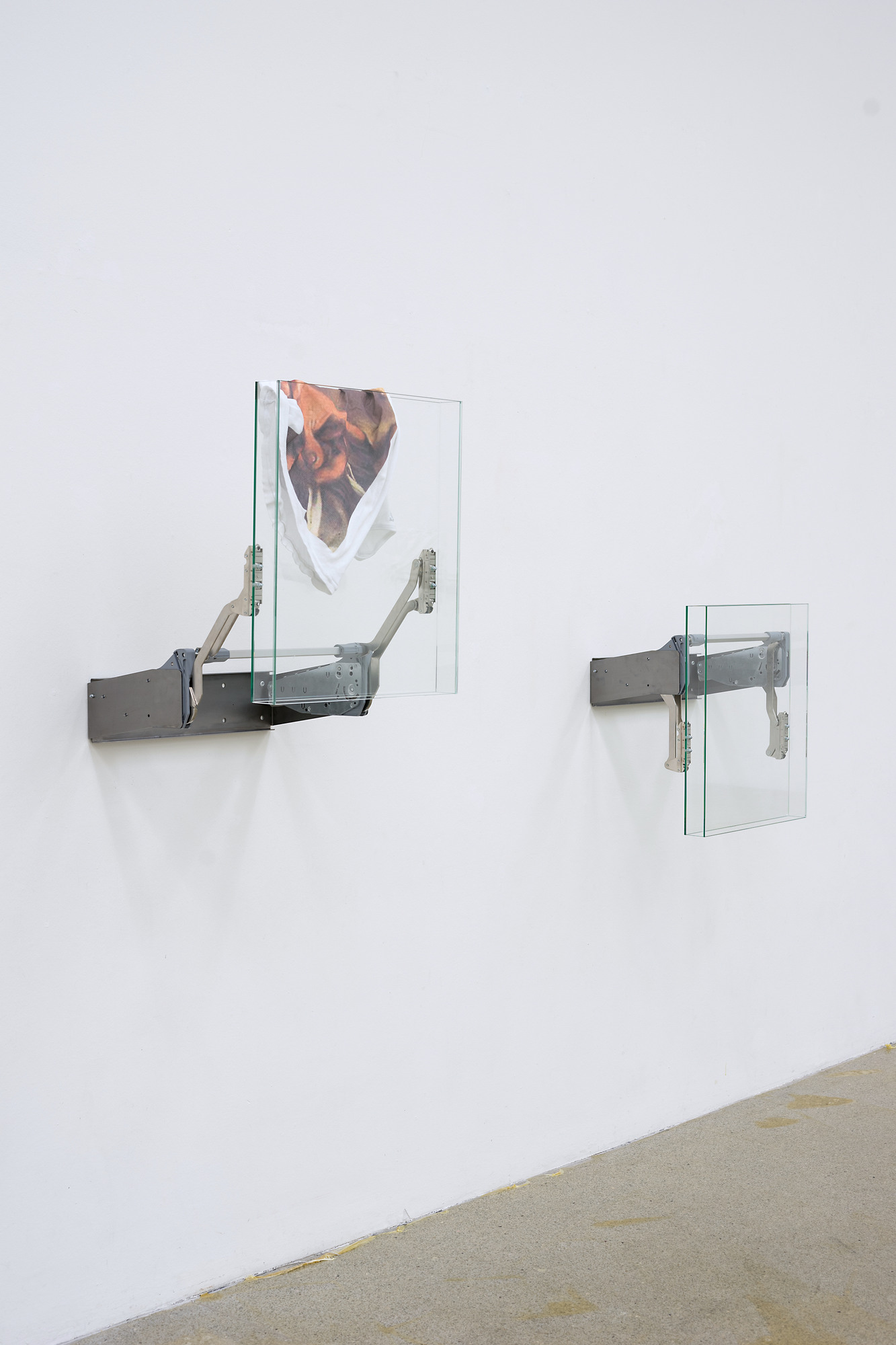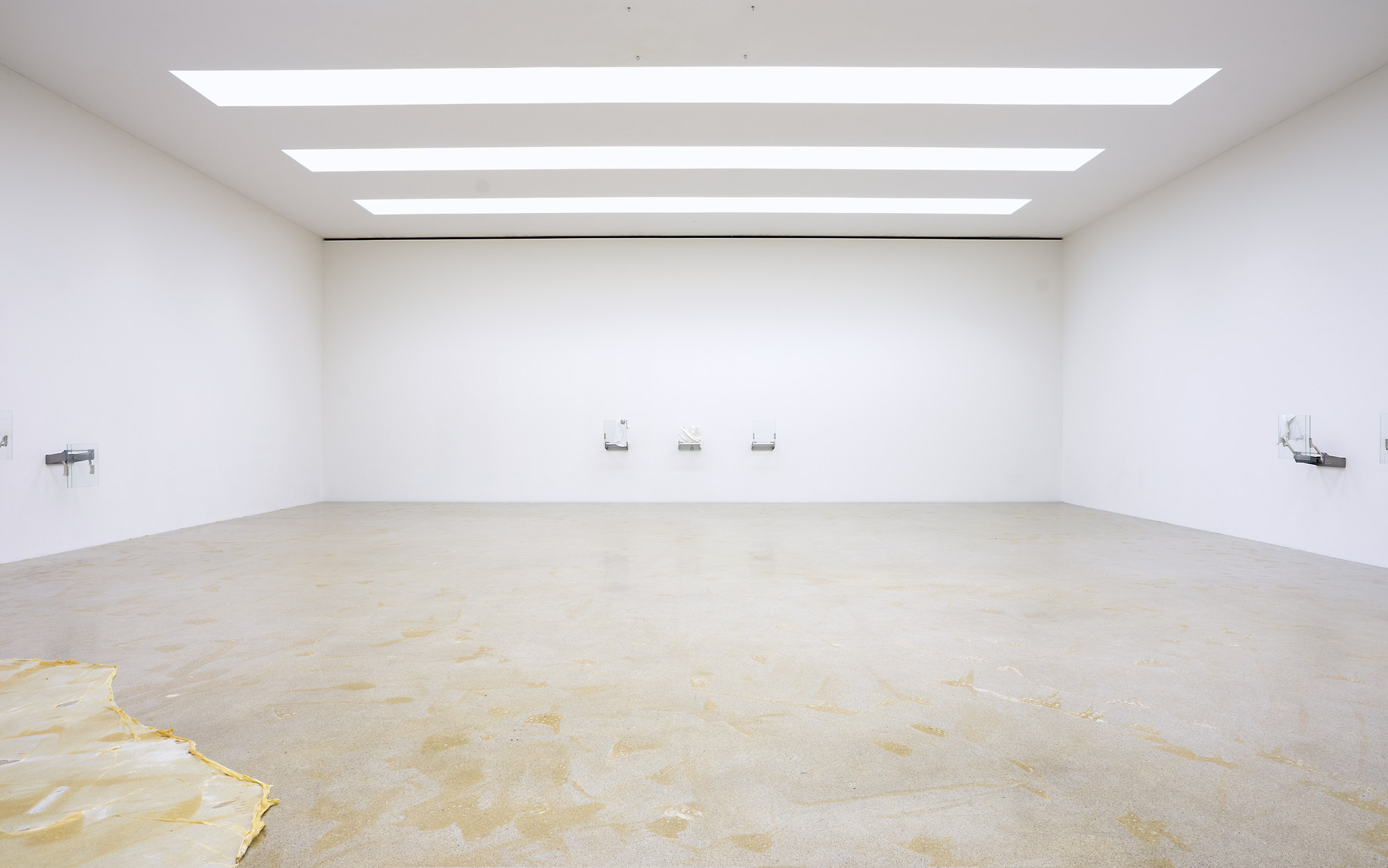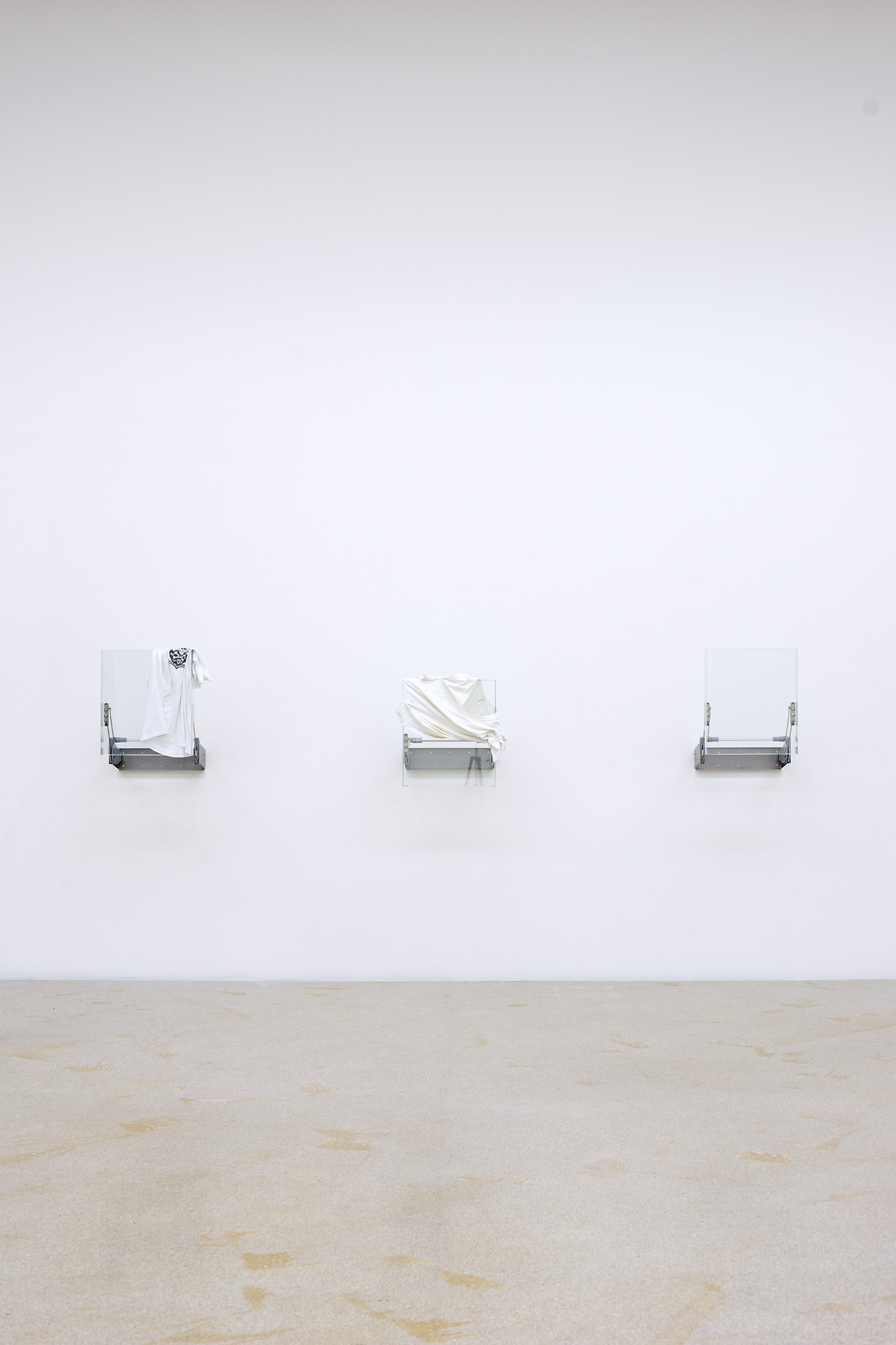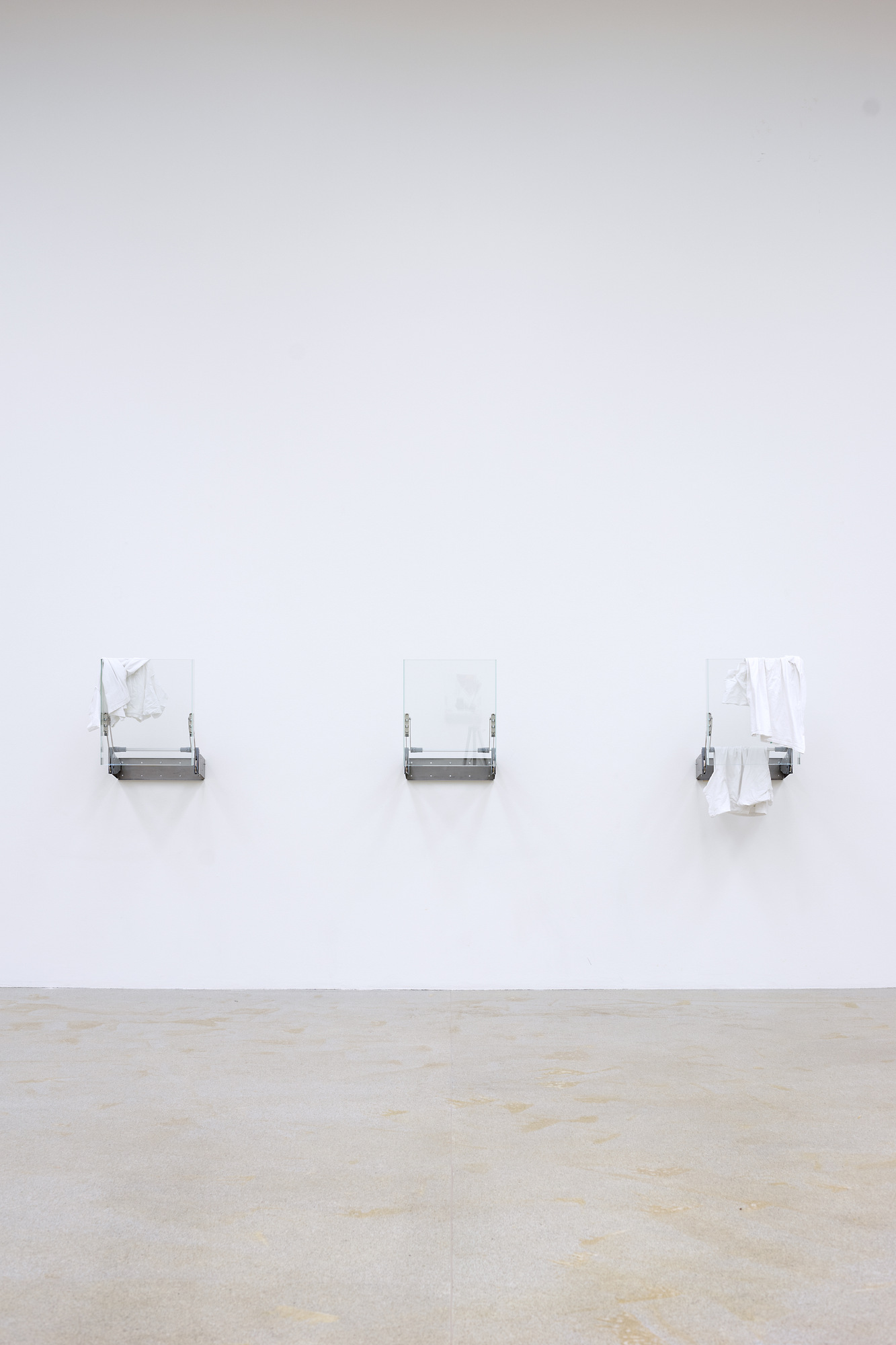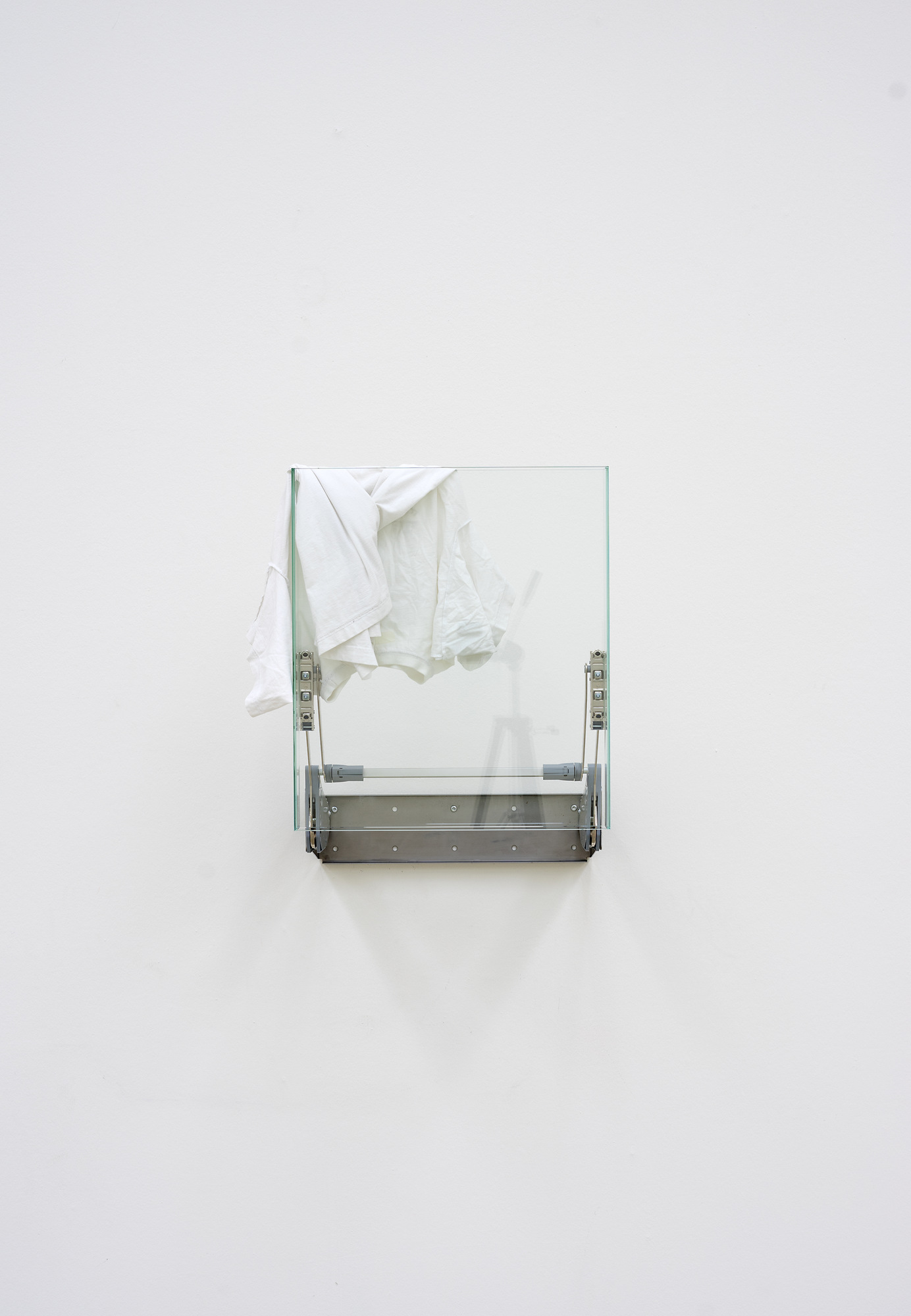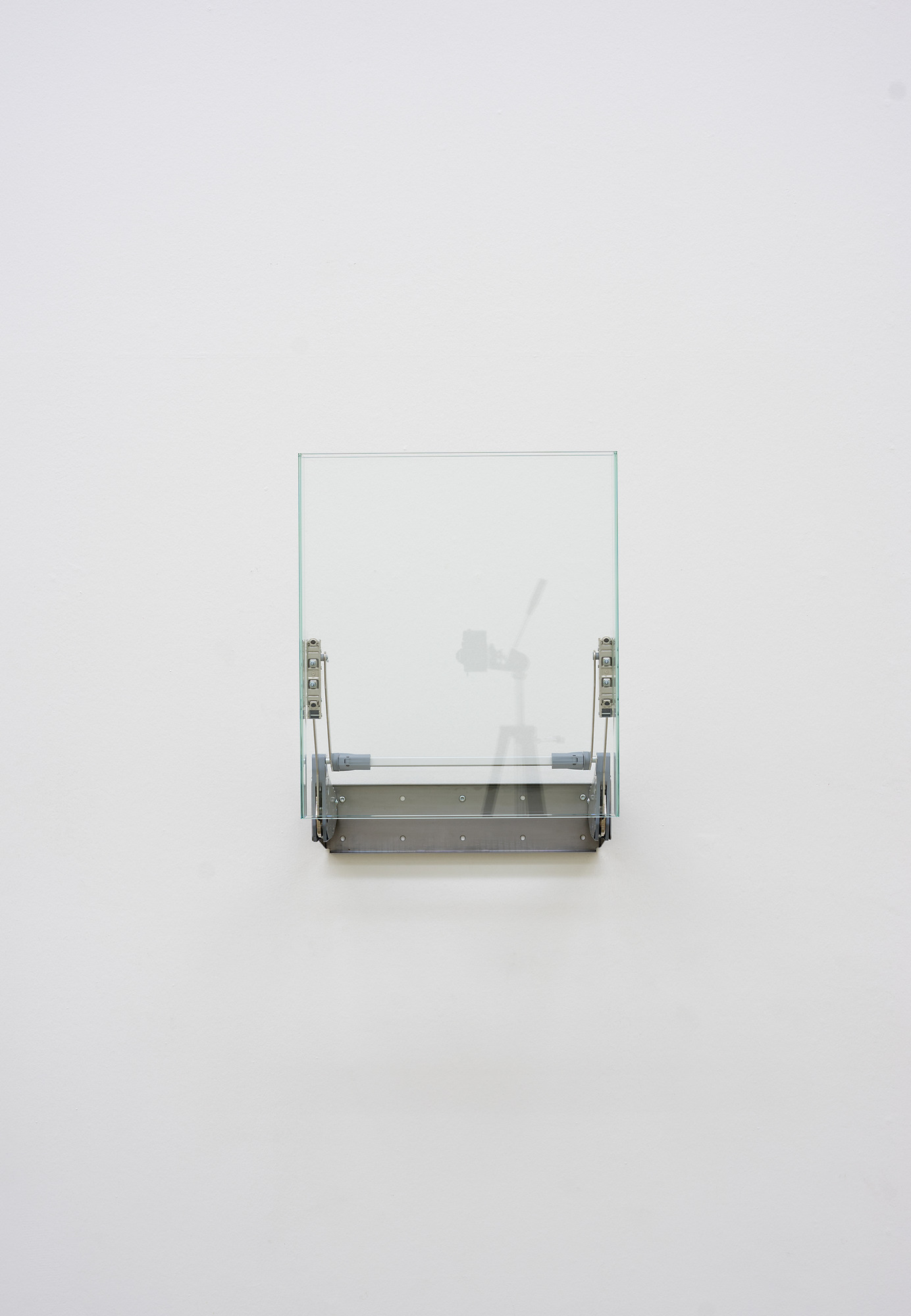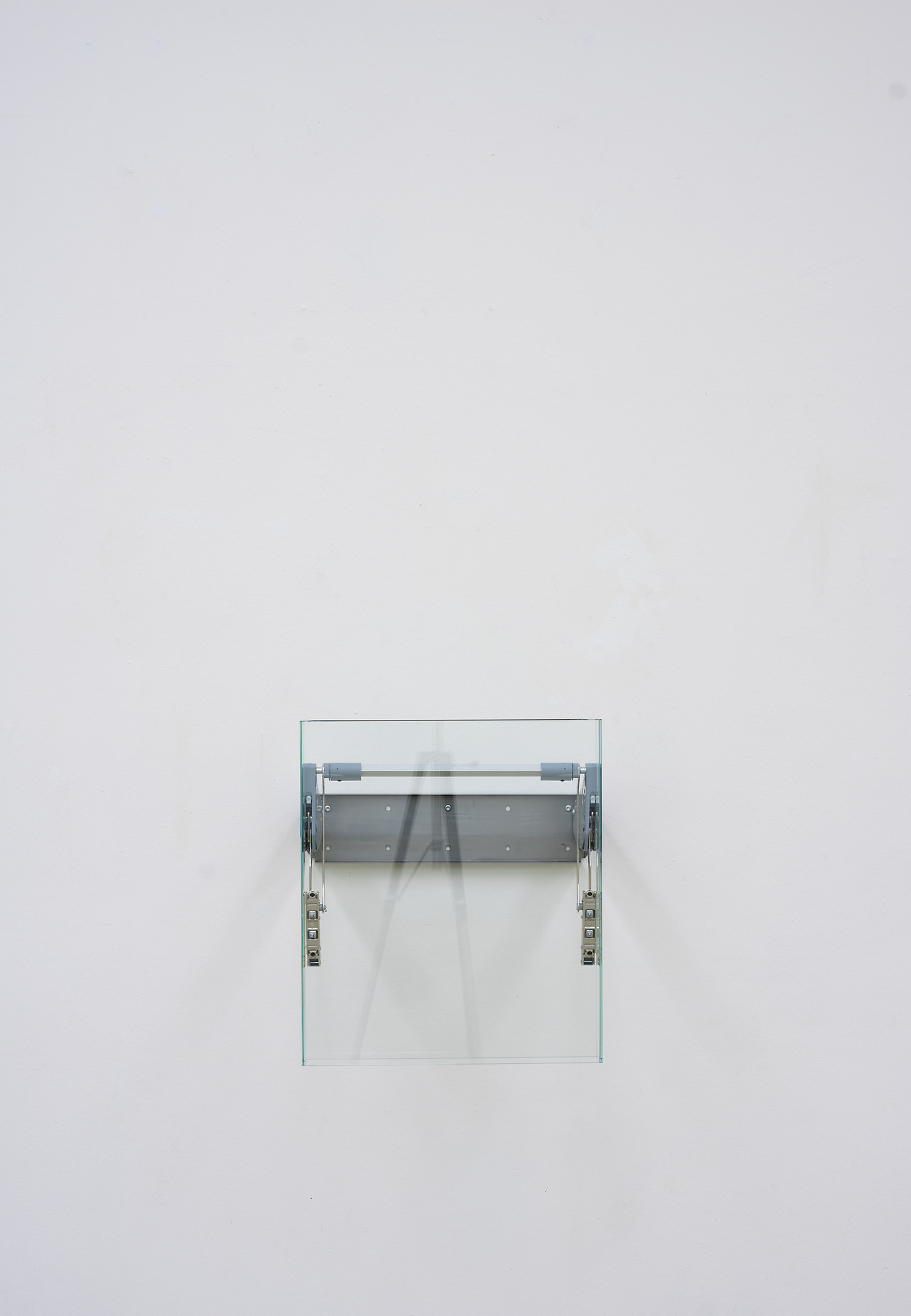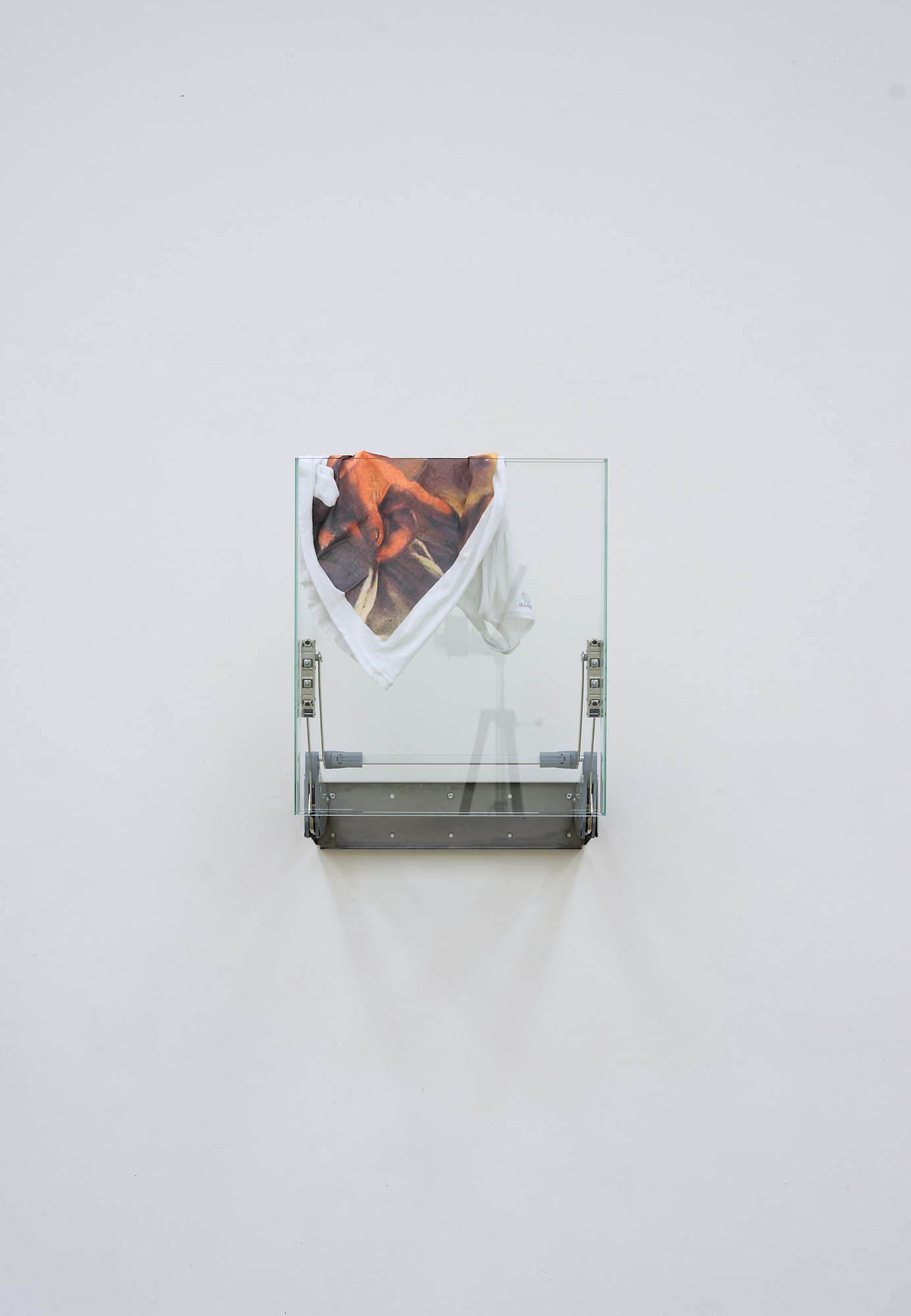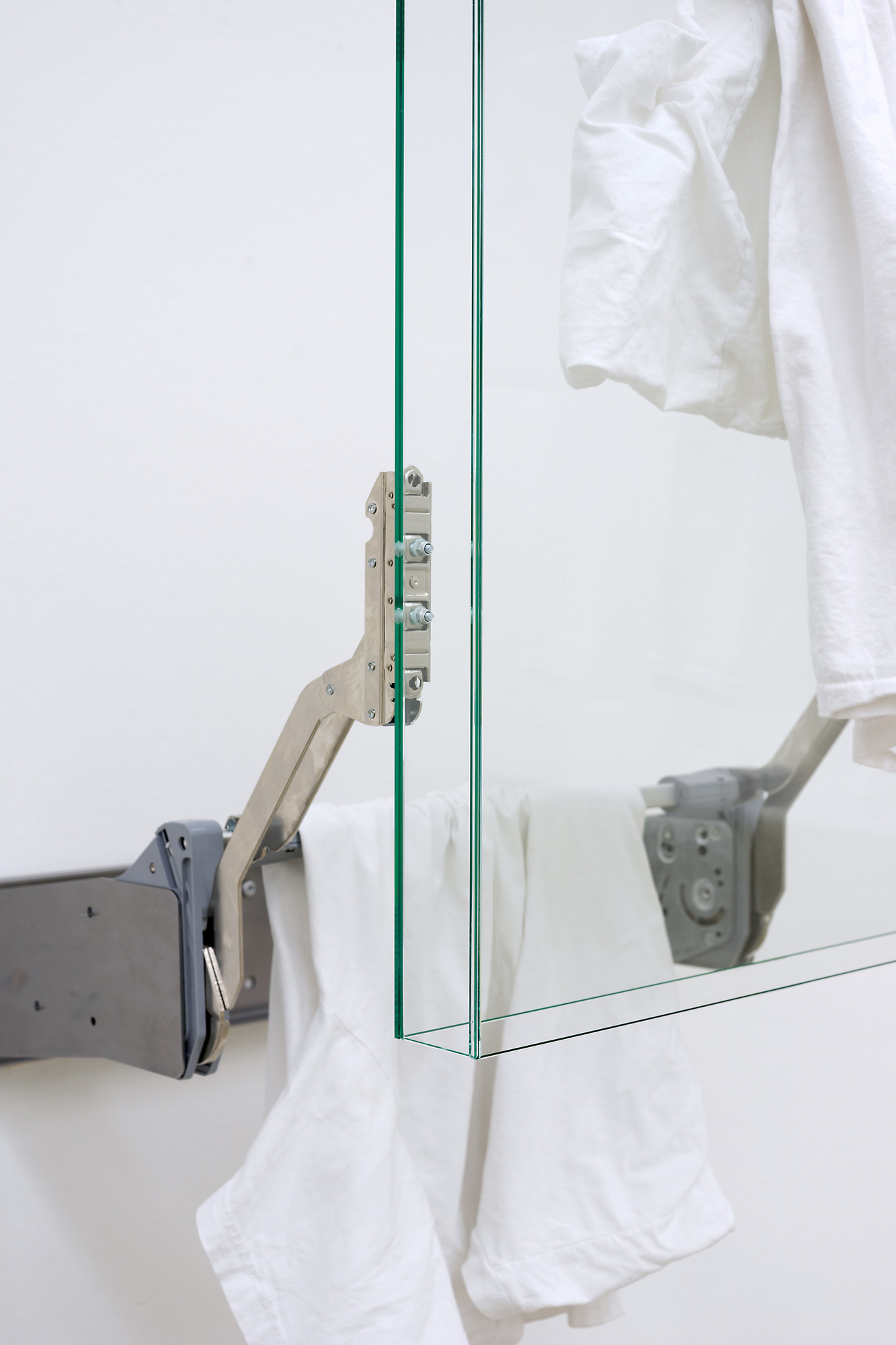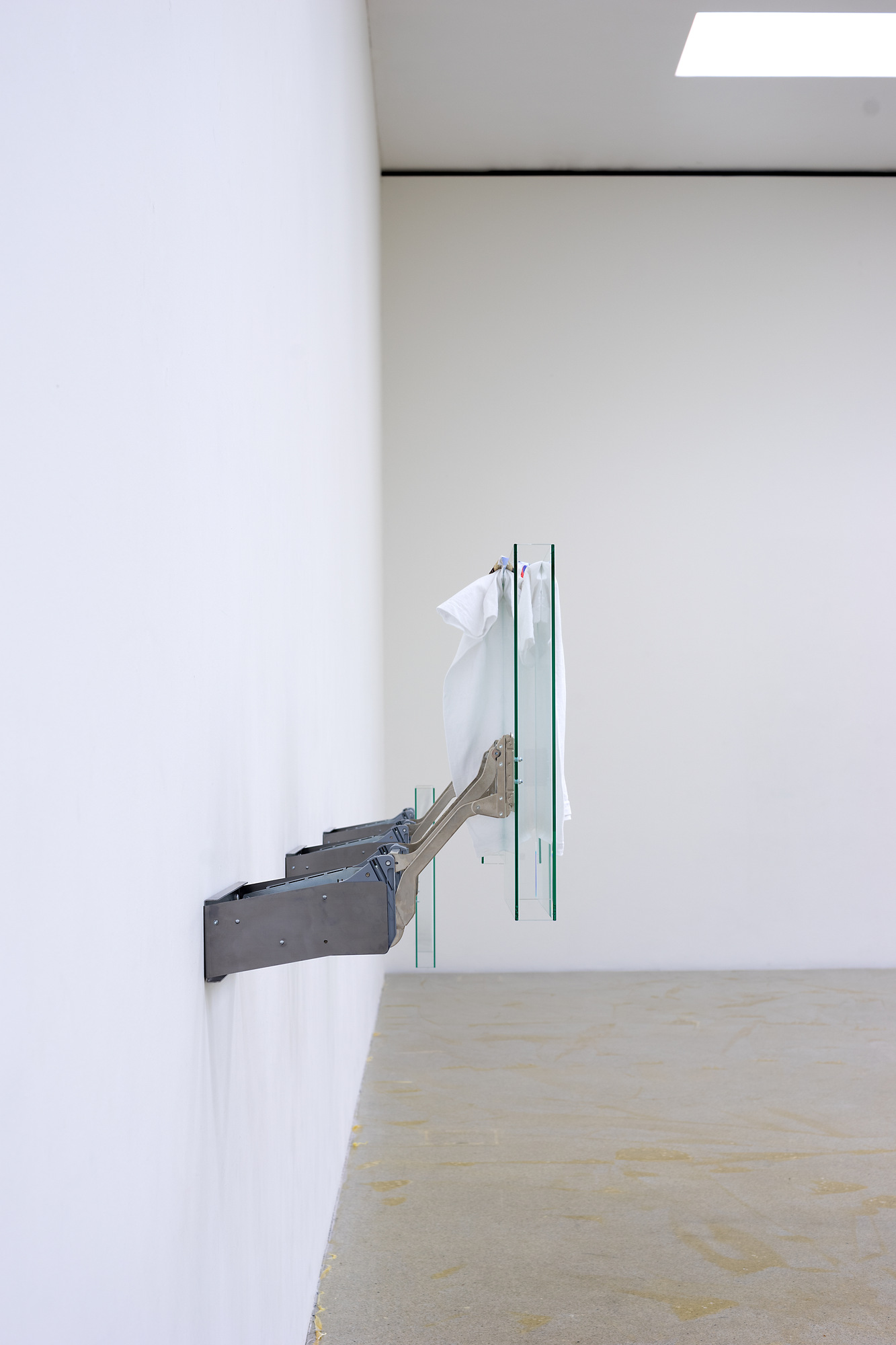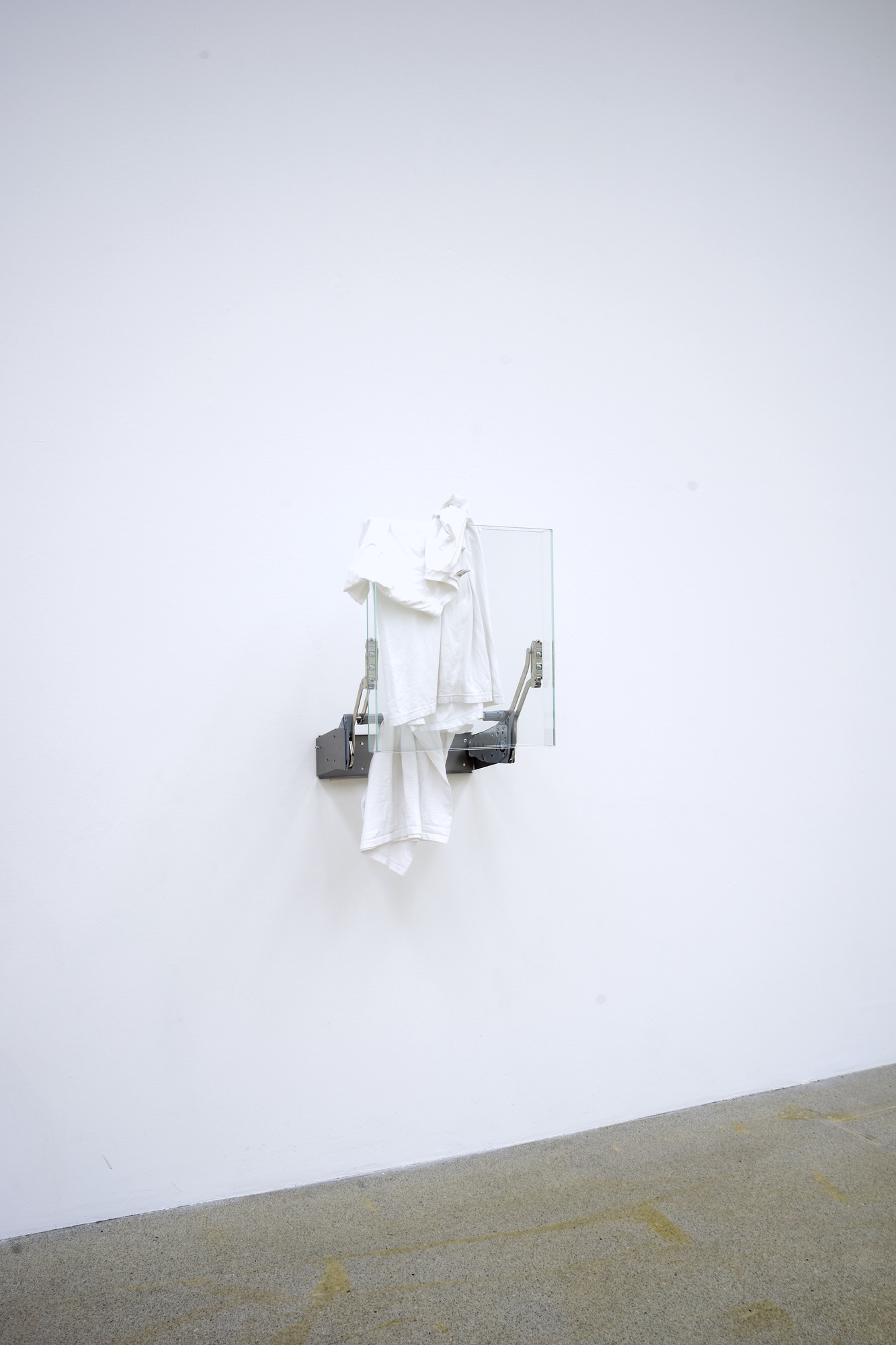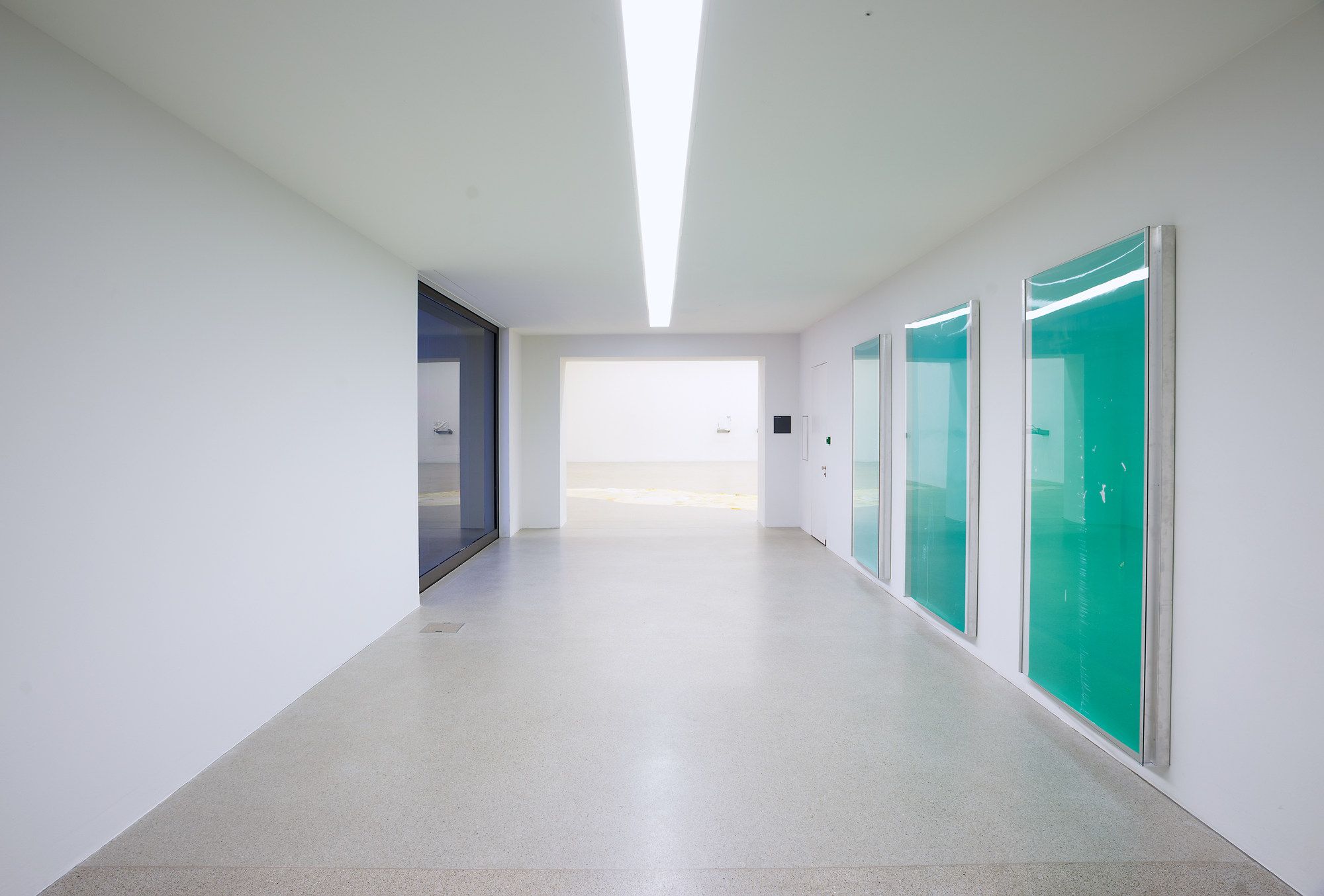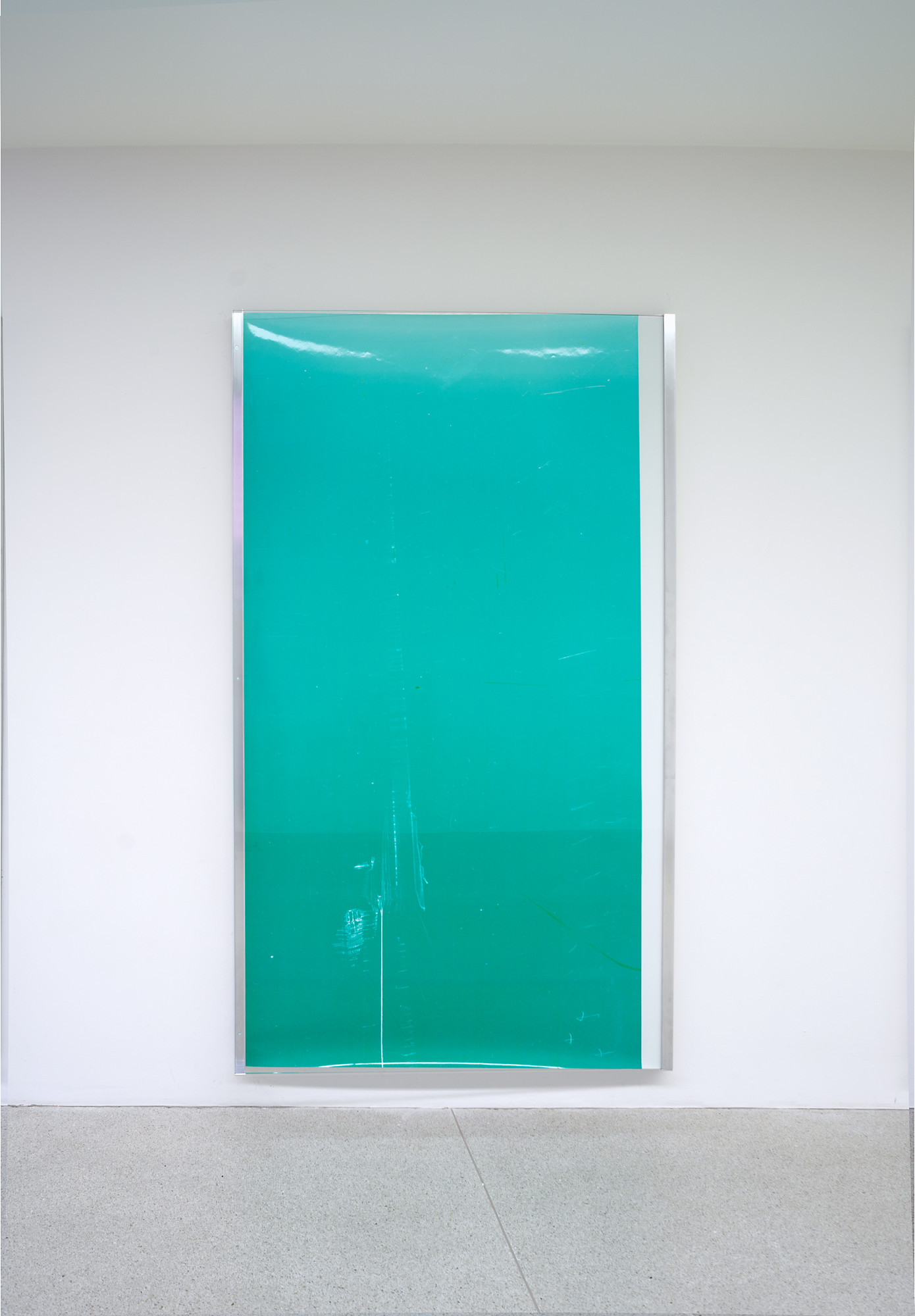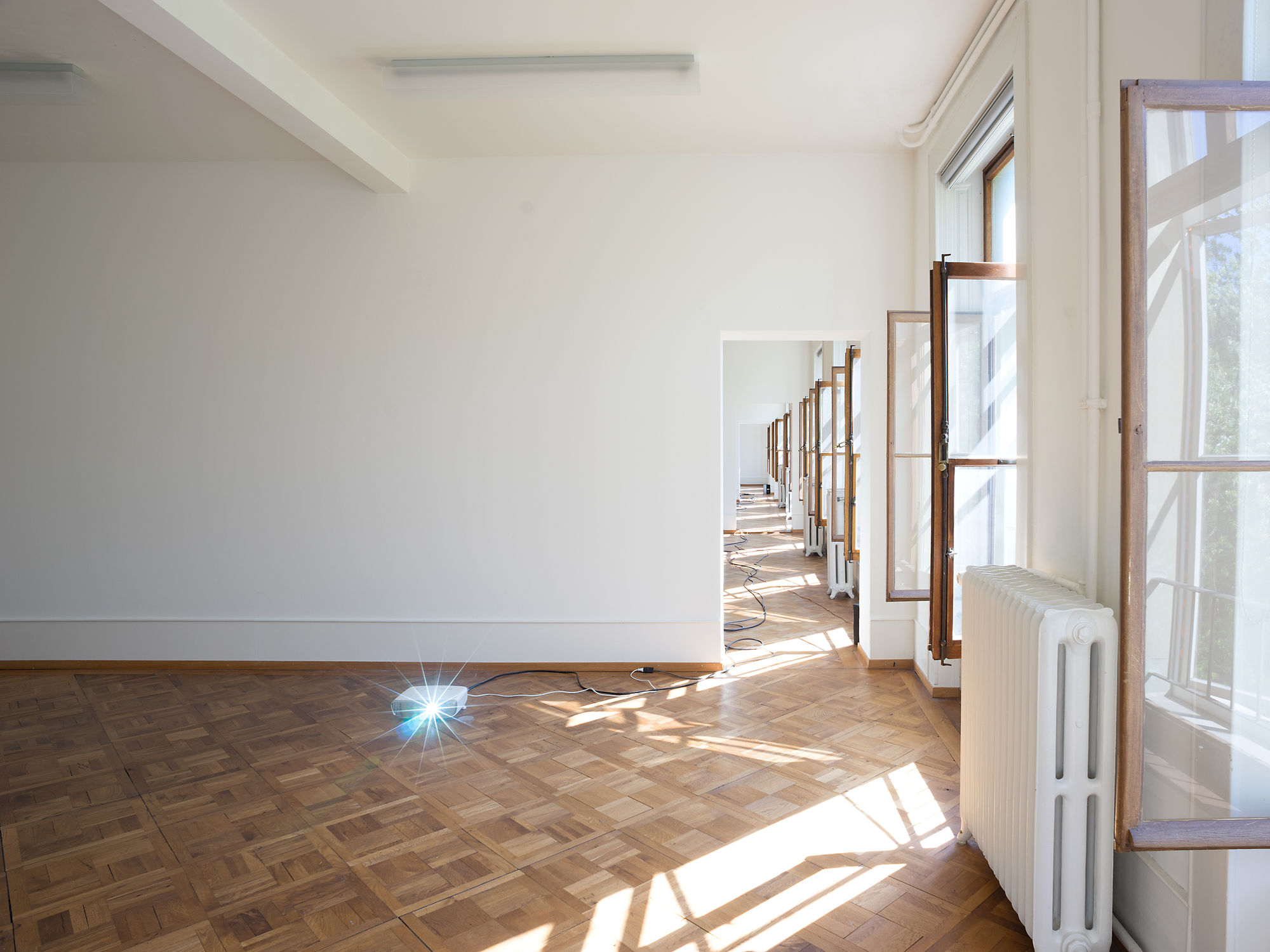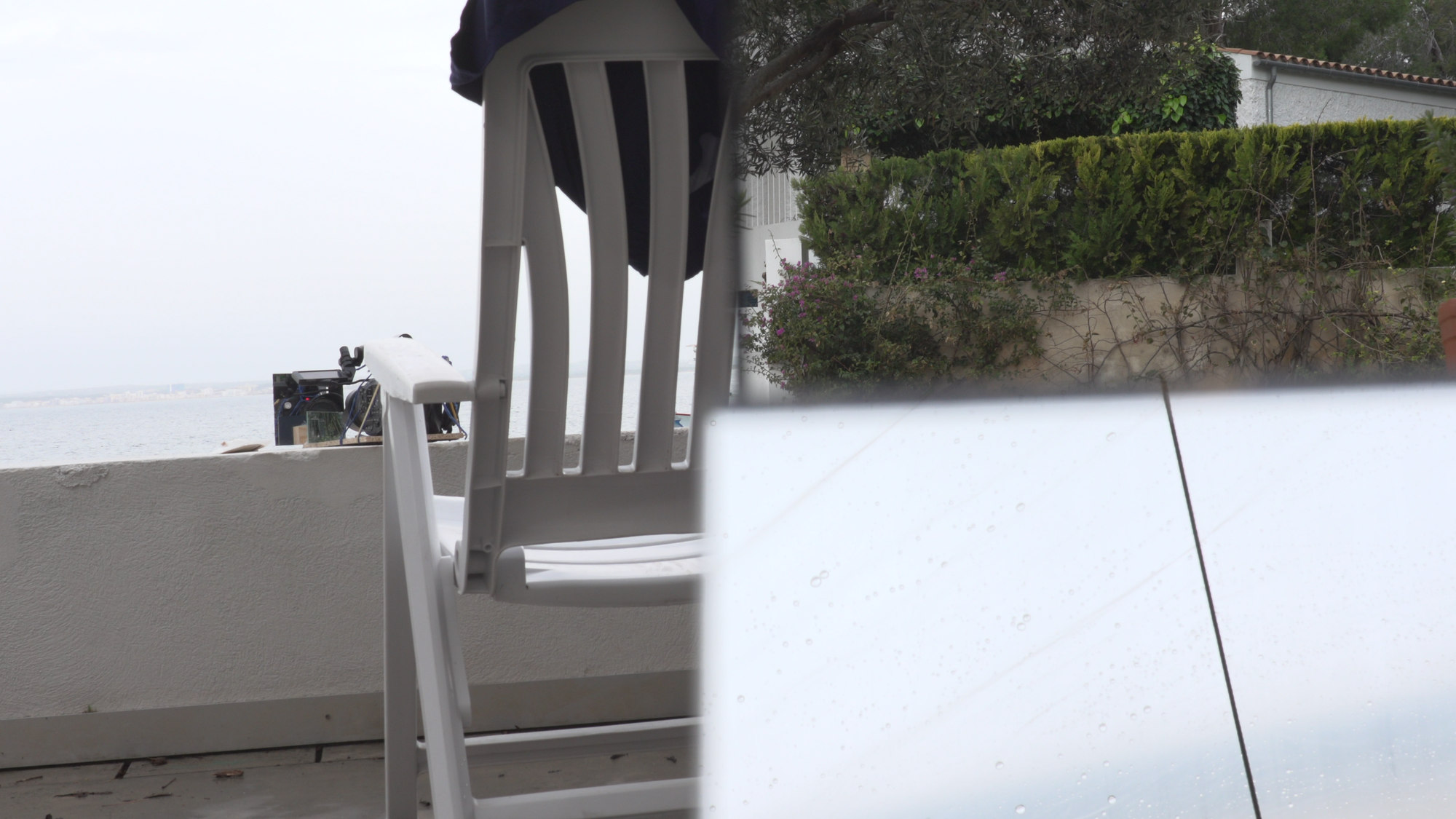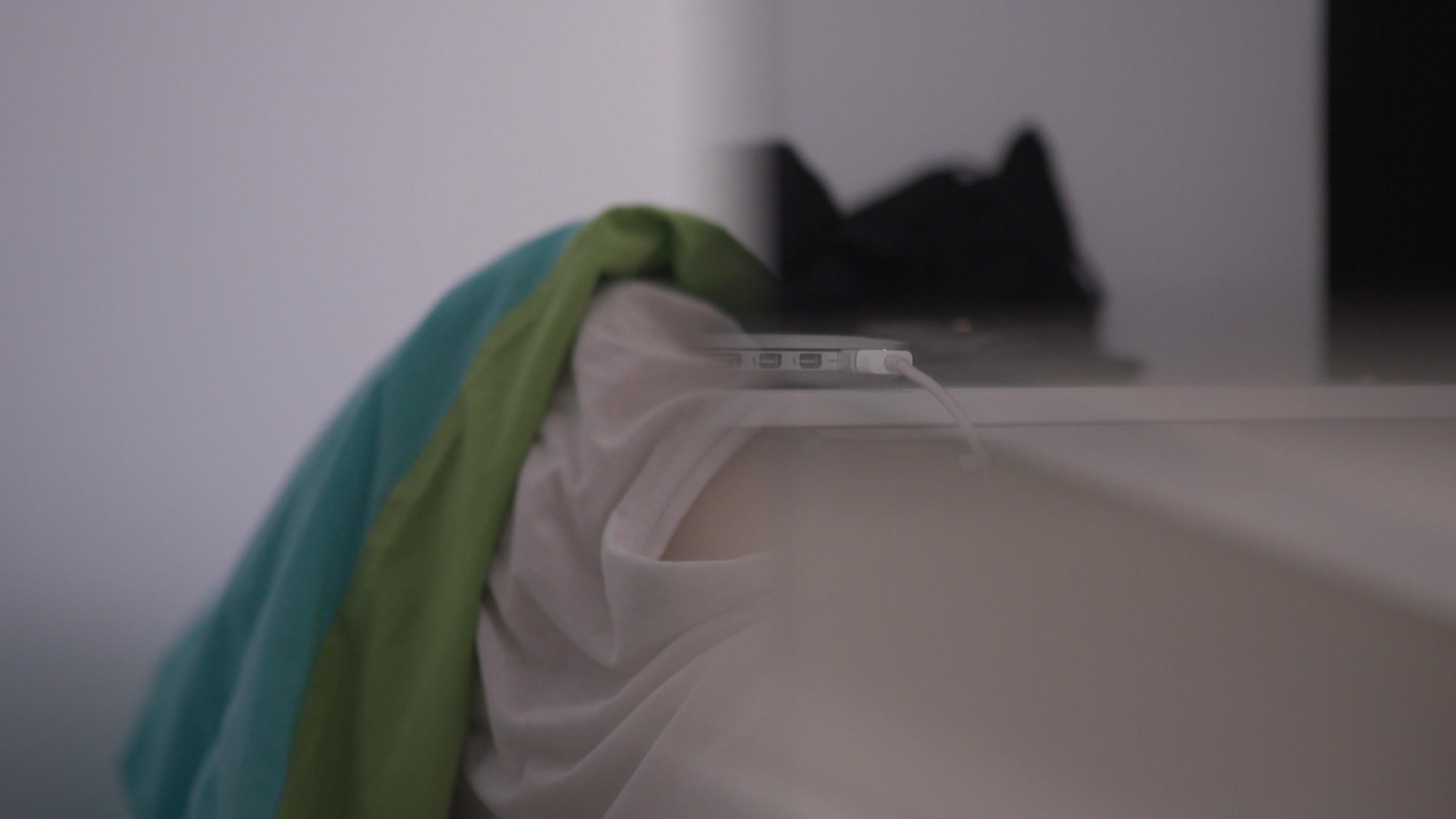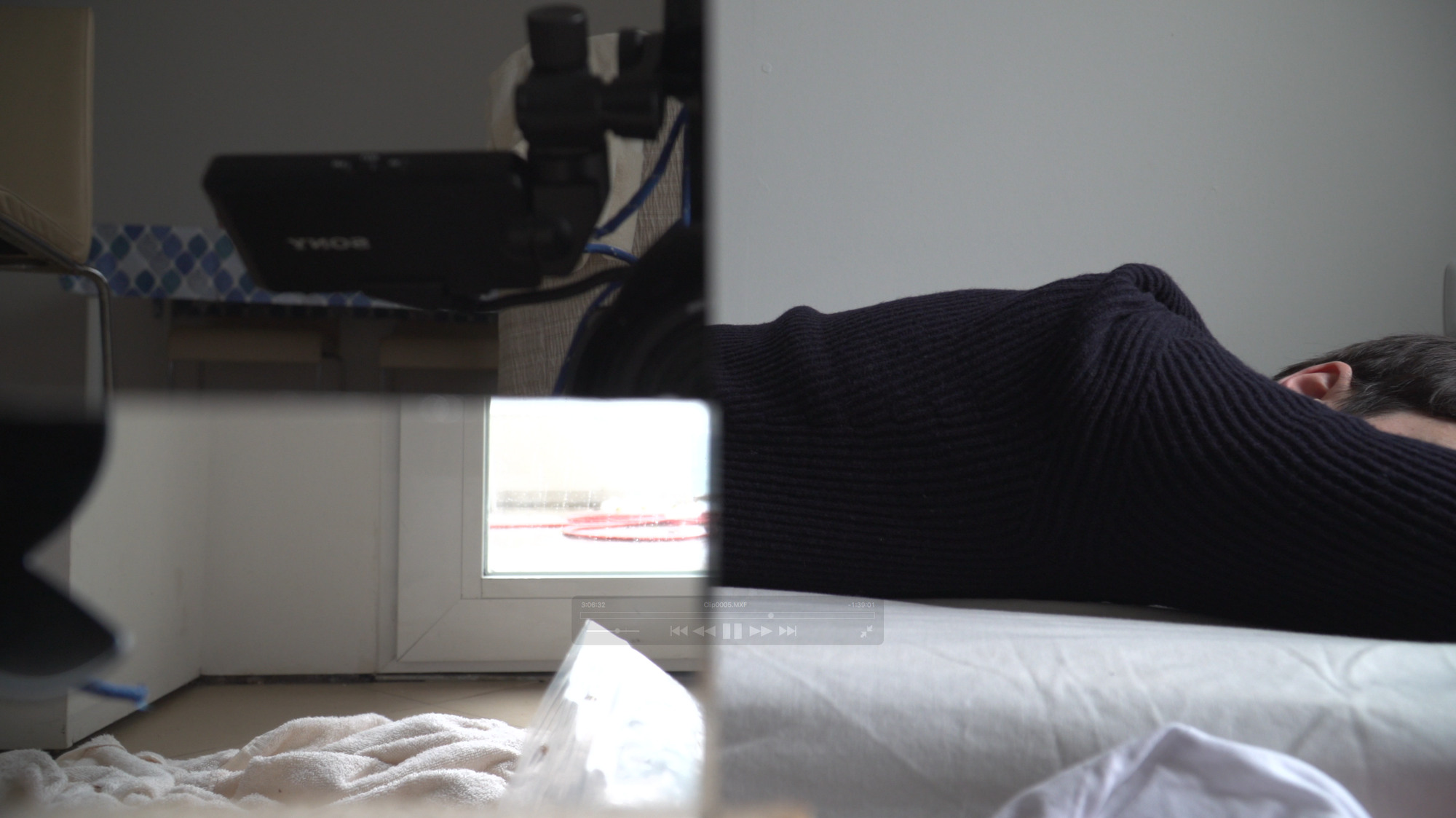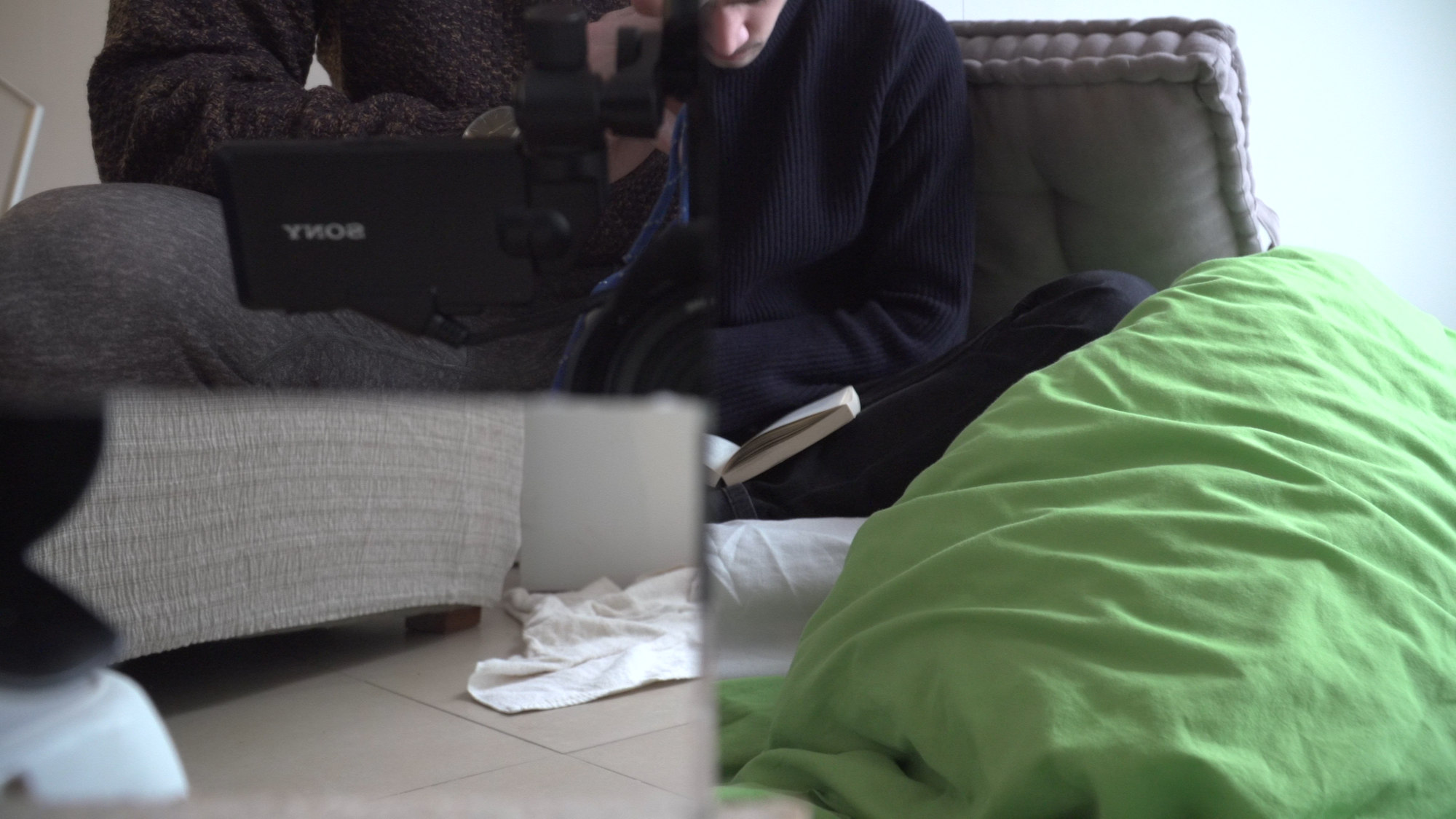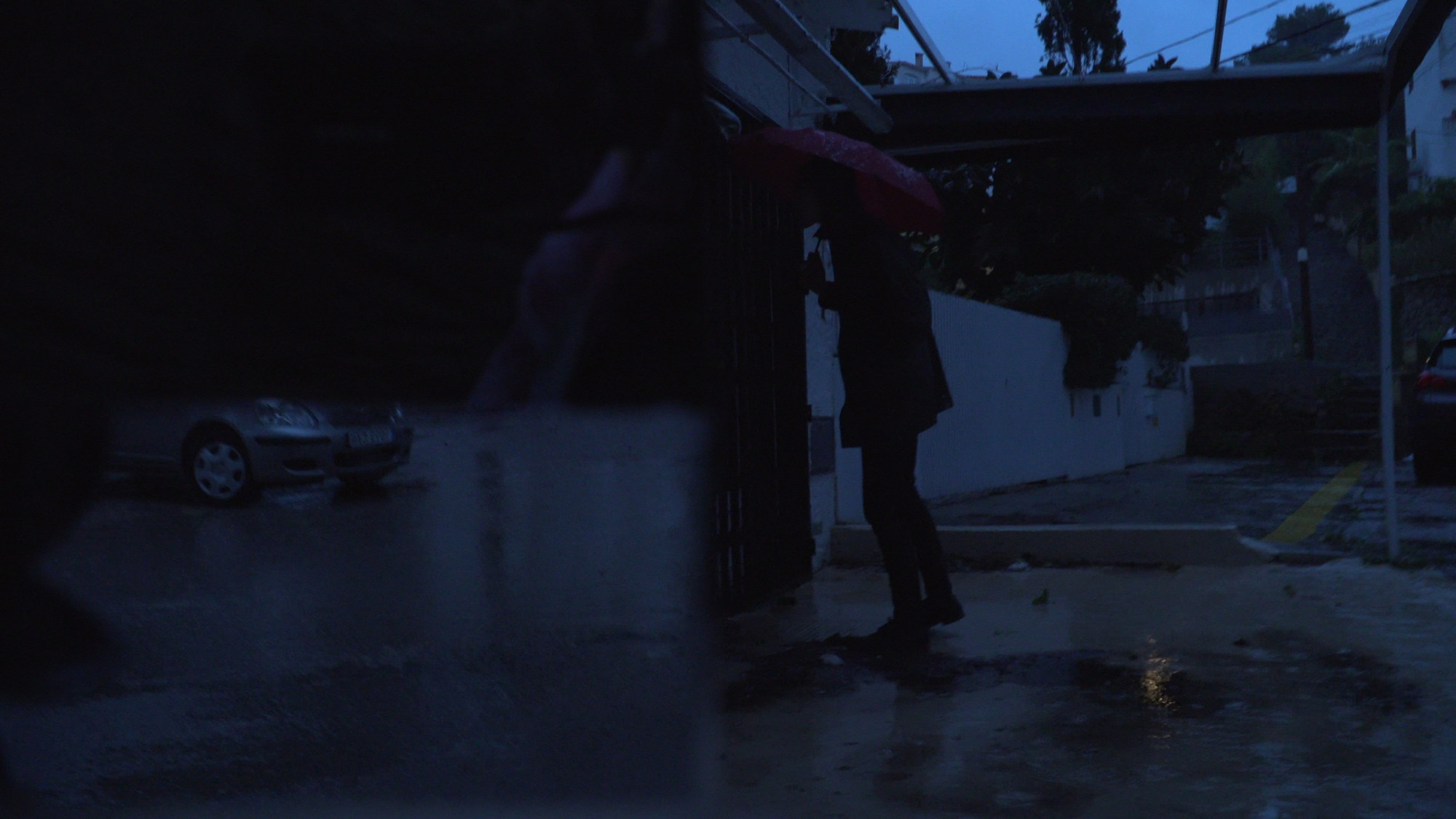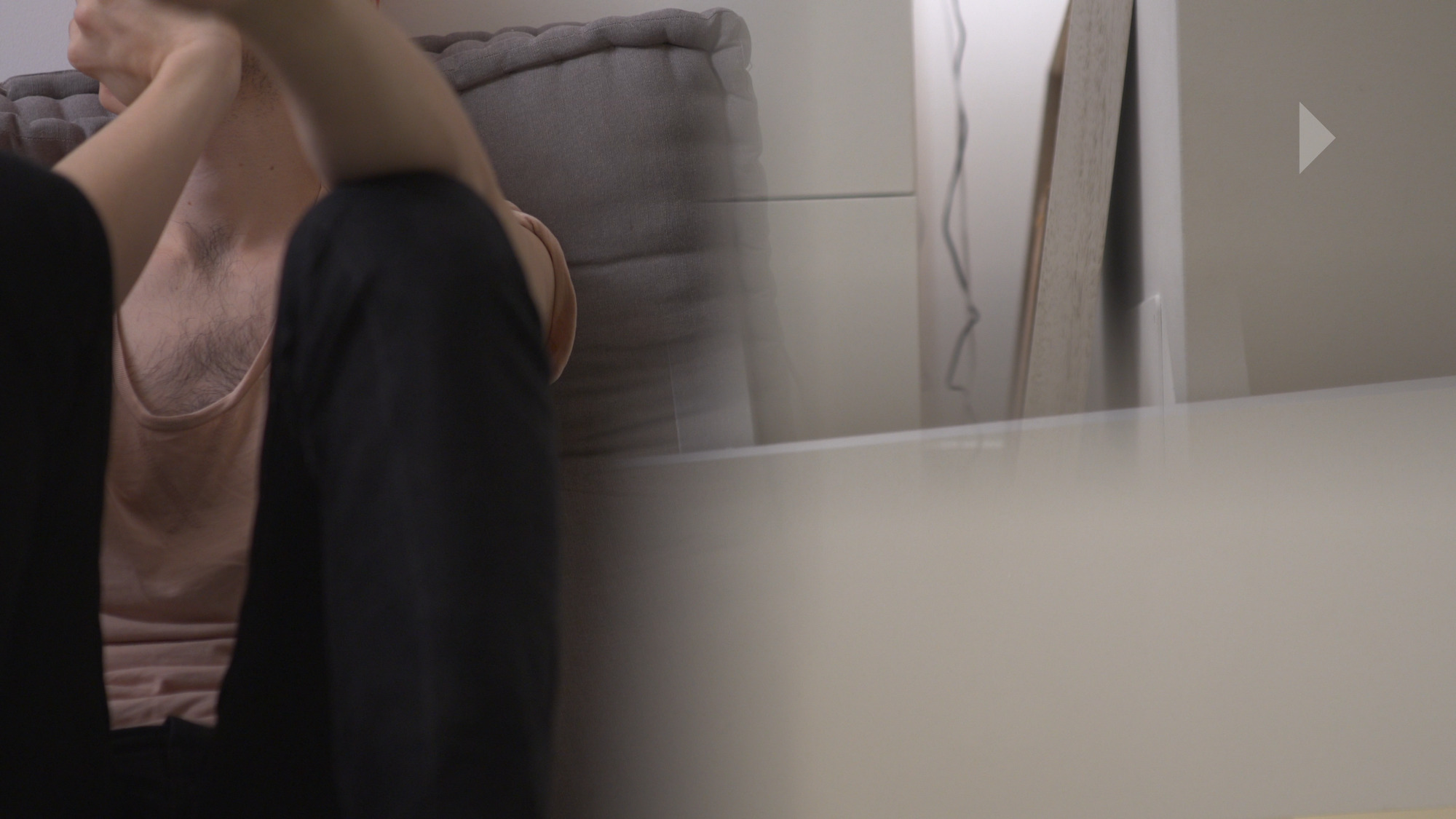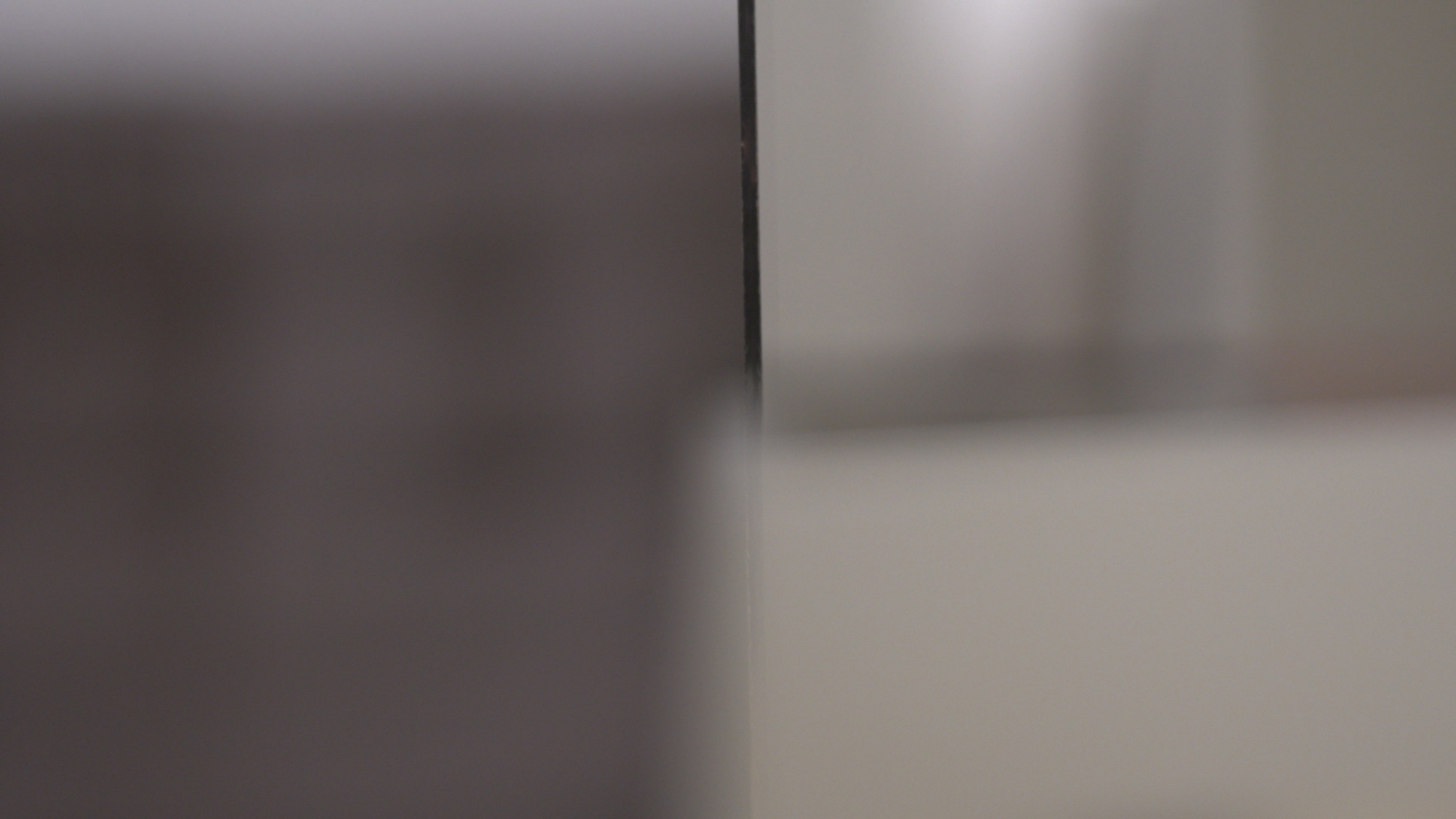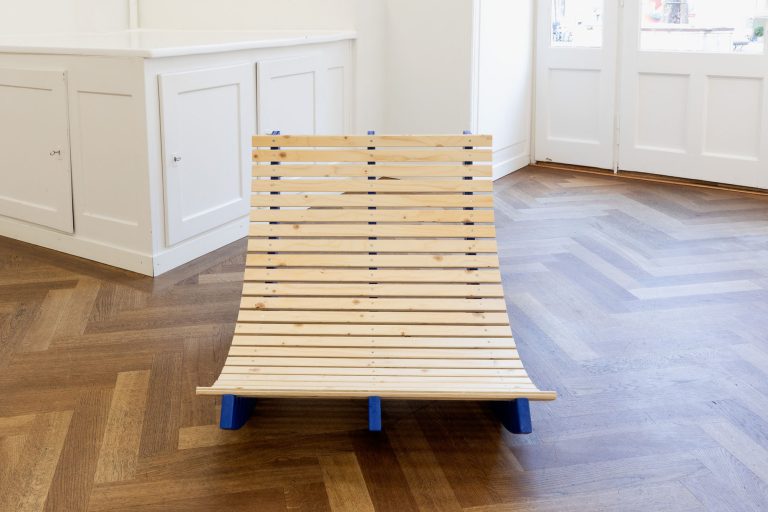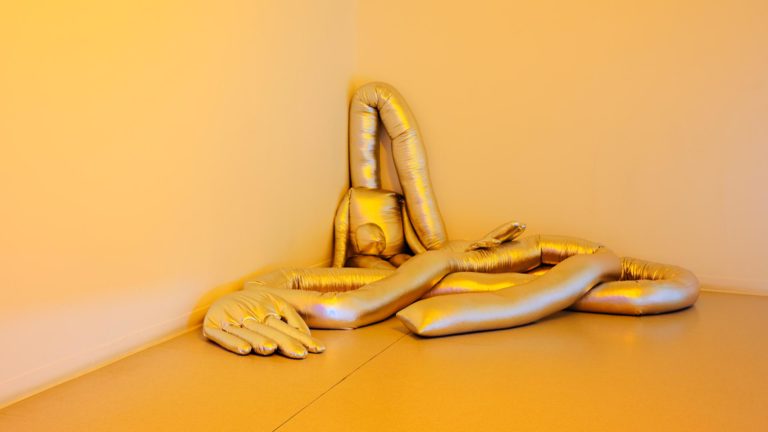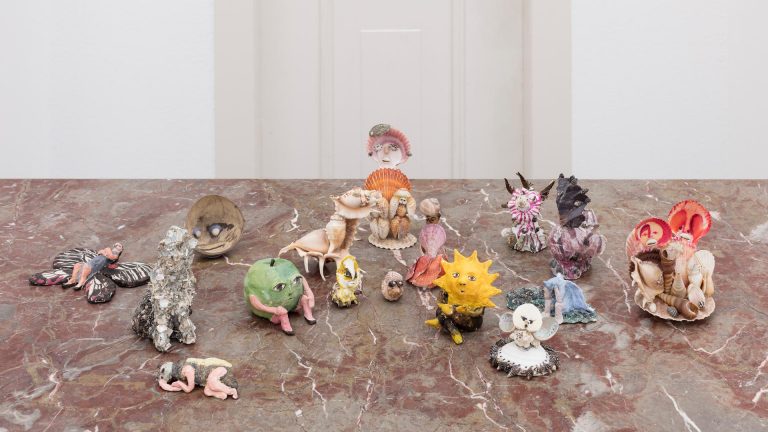Artist: Manuel Burgener
Exhibition title: Ojingeo
Venue: Art Centre Pasquart, Bienne, Switzerland
Date: June 29 – August 26, 2018
Photography: all images copyright and courtesy of the artist, Art Centre Pasquart and Gallery Maria Bernheim
Suspension of disbelief, literally. At first glance, Manuel Burgener’s work looks very much like art. Burgener makes use of a formal grammar, inherited from American Minimalism, that has become the default setting of much contemporary sculpture — a historical horizodn that still largely delineates, more than half a century after its inception, both our grasp of why and how art is made, and our capacity to understand and experience it. Yet, despite the wide availability of this common syntax, Burgener’s works remain unusually resistant to interpretation, obstinately opaque. Obviously, the minutiae of the aesthetic quarrels that have shaped the historical narratives of Minimalism, Postminimalism and every subsequent neo-minimalist movement that has emerged since the 1960s, have long receded from our memory. Although this collective amnesia is generally seen as concomitant to the establishment of this streamlined lingua franca, a number of fundamental conceptual underpinnings remain operational to this day. Foremost among them is the idea that the artist’s intentions and the material and cultural conditions of production of this kind of art must somehow be made transparent, and substantiate the parameters of its reception.
Manuel Burgener’s work doesn’t so much erase this supposedly direct line of communication as it saturates it to the point of indistinction. Some works seem to replay a radical address to the viewer’s proprioception via a highly staged relationship between the sculptures and the exhibition space, while others offer us an opportunity to contemplate the intricacies of self-contained multi-part compositions. Still others appear to be performing in a drama that opposes the handmade to the industrially manufactured or, alternatively, the essential quality of certain materials to their culturally contingent status. Some sculptures clearly affirm the alignment of art with design, while others refute the very possibility of function. All of the above possibilities — and many more — are often present, across various works, in the same exhibitions. Clearly, Manuel Burgener’s goal is not to set out a speculative catalog of the countless ways we have learned to extract meaning, and therefore value, from abstract, neo-minimalist sculpture. Rather, by indicating that all interpretations are simultaneously possible, the artist forces us to consider the fact that they might also be, for all intents and purposes, futile. Clearly, we are on our own, with no other option but to take stock of what’s there, right in front of us, and attempt to contemplate the concrete mechanisms that preside over our experience of “art”.
On closer inspection, everything in Manuel Burgener’s exhibitions seems to be on the verge of coming apart, a sensation that is as haptic as it is visual. For a large gallery-wide installation at Galerie Catherine Bastide in Brussels in 2013, large sheets of glass, whose edges were unpolished, rested on a metal screw. The whole structure was extremely fragile, although the real physical danger was not immediately apparent to the casual onlooker. This was not a performative juggling act but a careful staging of a precarious, quasi-imperceptible balance. As long as no one accidentally leaned into the sculpture, nothing would (and did) happen. Nothing is ever permanently anchored. Recently, at the Galerie Maria Bernheim, the artist displayed a wall composition made up of modified light bulbs, electrical wires and a translucent plastic sheet, all held together by an industrially-induced vacuum. A mechanized version of “holding one’s breath”, although this expression is far too expressive, far too poetic, to describe the forces at play. At the end of the show, once unplugged, everything came crashing down. How much force is needed to bring disparate objects close enough to one another for us to perceive them, for a time, as art? In this particular case, 9,000 kilograms per square meter, to be exact.
-Fabrice Stroun 2018

